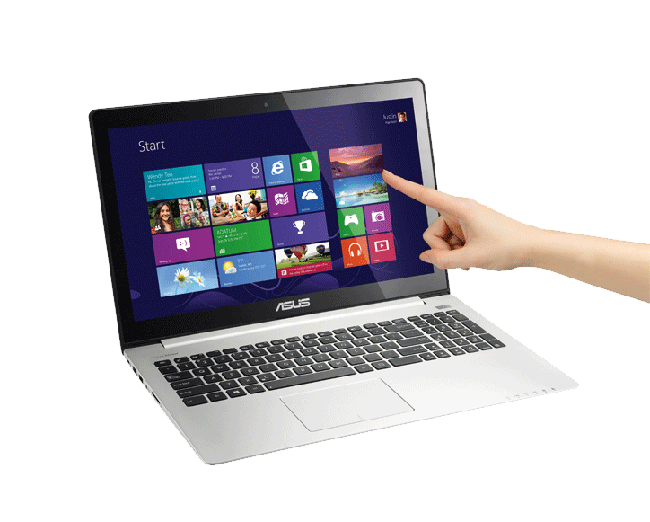 Looking for a Windows 8 Ultrabook with a 15.6-inch touch display and good battery life? For around $700, you could bring home a 15-inch Asus VivoBook S500, which just landed in North American online retailers today.
Looking for a Windows 8 Ultrabook with a 15.6-inch touch display and good battery life? For around $700, you could bring home a 15-inch Asus VivoBook S500, which just landed in North American online retailers today.
After teasing us with its full lineup of Windows 8 devices back in October, offering just the 11.6-inch (S202E) and 14.1-inch (S400) VivoBooks in America until now, Asus is finally bringing its biggest VivoBook to our shores. Like its smaller siblings, the S500 has a clean, business-like metal body without the fancy lid design of Asus’ higher-end Zenbook Ultrabooks. It offers quite a number of expansion options for an Ultrabook: it comes with three USB ports (one is a USB 3.0), one HDMI so you can plug directly into a HDTV, a SD card slot plus a mic/headphone audio jack for video chats. At 0.8-inch thick, the S500 just meets the Ultrabook thinness requirement and should be light enough to tote around as it only weighs 4.6-pounds.
This VivoBook has a 15.6-inch LED HD touch display with 1366 x 768 pixel resolution that makes Windows 8 much more enjoyable to use, and is powered by a third-gen Intel Core i5 processor (1.7 GHz Core i5-3317U), 6GB of RAM, and a hybrid hard drive with 500GB of storage plus 24GB of SSD for fast boot-ups. Although the press release from Asus said the S500 could come with discrete Nvidia GeForce GT 635M graphics, the configuration that is available from American retailers only offers integrated Intel graphics (Intel HD Graphics 4000).
It’s tough to say exactly if and when touch-based Windows 8 laptops will really see a price drop as rumored, but you can get this S500 VivoBook for a little less than $700 right away by shopping around. TigerDirect, for example, is retailing this particular machine at $680, which is $20 less than the 14-inch VivoBook. Other American e-tailers carrying this configuration include Adorama, B&H, Amazon, and NCIX.
Editors' Recommendations
- These laptops are all under $500 for back-to-school
- Asus’ new VivoBook Flip 14 comes with AMD’s Ryzen 5000 and starts at just $600
- Amazon deal drops prices on Asus VivoBook laptops and 2-in-1s


